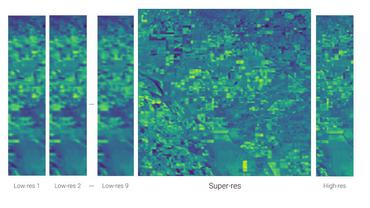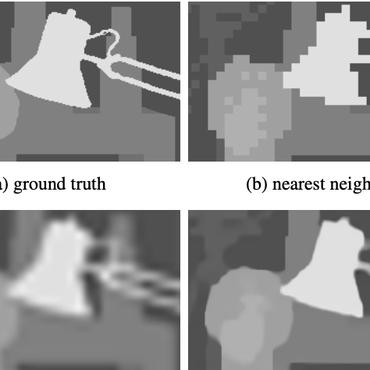Super-Resolution
1283 papers with code • 0 benchmarks • 20 datasets
Super-Resolution is a task in computer vision that involves increasing the resolution of an image or video by generating missing high-frequency details from low-resolution input. The goal is to produce an output image with a higher resolution than the input image, while preserving the original content and structure.
( Credit: MemNet )
Benchmarks
These leaderboards are used to track progress in Super-Resolution
Datasets
Subtasks
Latest papers with no code
Gull: A Generative Multifunctional Audio Codec
We introduce Gull, a generative multifunctional audio codec.
Efficient Learnable Collaborative Attention for Single Image Super-Resolution
In addition, we integrate our LCoA into a deep Learnable Collaborative Attention Network (LCoAN), which achieves competitive performance in terms of inference time, memory consumption, and reconstruction quality compared with other state-of-the-art SR methods.
CycleINR: Cycle Implicit Neural Representation for Arbitrary-Scale Volumetric Super-Resolution of Medical Data
In the realm of medical 3D data, such as CT and MRI images, prevalent anisotropic resolution is characterized by high intra-slice but diminished inter-slice resolution.
Power-Efficient Image Storage: Leveraging Super Resolution Generative Adversarial Network for Sustainable Compression and Reduced Carbon Footprint
In recent years, large-scale adoption of cloud storage solutions has revolutionized the way we think about digital data storage.
PointSAGE: Mesh-independent superresolution approach to fluid flow predictions
To address these concerns, we propose a novel framework, PointSAGE a mesh-independent network that leverages the unordered, mesh-less nature of Pointcloud to learn the complex fluid flow and directly predict fine simulations, completely neglecting mesh information.
Real-GDSR: Real-World Guided DSM Super-Resolution via Edge-Enhancing Residual Network
A low-resolution digital surface model (DSM) features distinctive attributes impacted by noise, sensor limitations and data acquisition conditions, which failed to be replicated using simple interpolation methods like bicubic.
CSR-dMRI: Continuous Super-Resolution of Diffusion MRI with Anatomical Structure-assisted Implicit Neural Representation Learning
The first is the latent feature extractor, which primarily extracts latent space feature maps from LR dMRI and anatomical images while learning structural prior information from the anatomical images.
GenN2N: Generative NeRF2NeRF Translation
We present GenN2N, a unified NeRF-to-NeRF translation framework for various NeRF translation tasks such as text-driven NeRF editing, colorization, super-resolution, inpainting, etc.
Knowledge Distillation with Multi-granularity Mixture of Priors for Image Super-Resolution
Knowledge distillation (KD) is a promising yet challenging model compression technique that transfers rich learning representations from a well-performing but cumbersome teacher model to a compact student model.
Translation-based Video-to-Video Synthesis
Translation-based Video Synthesis (TVS) has emerged as a vital research area in computer vision, aiming to facilitate the transformation of videos between distinct domains while preserving both temporal continuity and underlying content features.

 MSU SR-QA Dataset
MSU SR-QA Dataset
 TextZoom
TextZoom
 RealSRSet
RealSRSet
 DRealSR
DRealSR
 Holopix50k
Holopix50k
 PROBA-V
PROBA-V
 Stanford Light Field
Stanford Light Field
 OST300
OST300





